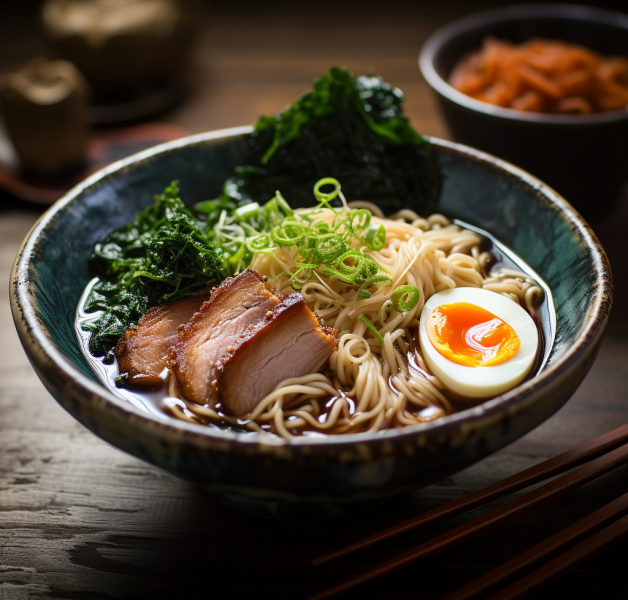Defined by umami taste, unique ingredients, and exciting cooking techniques, Japanese food is one-of-a-kind. The beautiful flavors of this cuisine have found favor with people all over the world. Japanese dishes like Miso, Sushi, and Ramen have become so popular that they are staples in many household menus.
Many Japanese recipes are not complicated. However, finding authentic Japanese ingredients for these recipes can be a challenge if you do not live near an Asian supermarket. Also, a few Japanese ingredients are unsuitable for certain diets or health conditions.
If either reason is holding you back from making your favorite Japanese recipes, this list of ingredient substitutions will prove handy. Use our recommended alternatives for Japanese ingredients and enjoy the authentic taste of Japanese food.

Soy Sauce
Soy sauce is an integral part of most Chinese and Japanese recipes. However, this condiment has a high salt content and is unsuitable for people with medical conditions like high blood pressure. Fortunately, you can substitute it with the following.

Coconut aminos: Coconut aminos tastes like soy sauce with a hint of sweetness. It is made from fermented coconut palm tree sap and does not contain any soy, wheat, or gluten. Hence, it is suitable for most diets. Another benefit is that it has only 90 mg sodium per teaspoon, whereas traditional soy sauce contains 150-320 mg of sodium. However, it is runnier than soy sauce. You can find coconut aminos in most supermarkets. Look for it in the health aisle or the section with spices and seasonings.

Bragg Liquid aminos: This liquid condiment is made with non-GMO soybeans and purified water. It is non-fermented and gluten-free. It has a gourmet quality, and the taste resembles tamari. Liquid aminos have no added salt. However, it has a high sodium content of 130 grams per teaspoon from soybeans.
Mirin

Mirin is a type of rice wine used in Japanese cooking. It is sweet and slightly tangy.
Mirin forms the base for many Japanese recipes, including Teriyaki sauce. It adds a glossy finish and smooth texture to dishes. Mirin is used to tenderize meat and vegetables. The sugar and alcohol in it prevent the disintegration of the ingredients.
Mirin resembles Sake, which is another Japanese rice wine. However, Mirin has less alcohol, which adds a subtle sweetness when used in a recipe.
Mirin is available in most Asian grocery stores and online. Many cooks substitute rice wine vinegar instead of Mirin in Japanese recipes. However, this is not an ideal substitution. Rice wine vinegar is pungent and makes a dish acidic. It also lacks the characteristic sweetness of Mirin. A better alternative is a mixture of sake and sugar in the ratio of 3:1. You can also use white grape juice instead of Mirin if you wish to avoid alcohol.
Sake
Just like Mirin, Sake is another indispensable component of Japanese cooking. It is used as a flavoring ingredient in the same way that wine is used in western cuisines. Sake has more alcohol and less sugar than Mirin. Mirin is usually added towards the end of the cooking process as it has less alcohol. However, Sake must be added early to allow enough time for the alcohol in it to evaporate.
Sake improves the aroma and intensifies the flavors of dishes. It adds Umami and sweet flavors to recipes. It is an important ingredient in many Japanese soups, sauces, stocks, and plant-based recipes. Just like with Mirin, rice wine is not a good substitute for Sake. If you do not have Sake, you can use dry sherry instead.
Rice vinegar

Rice vinegar is used in various Asian dishes like pickled vegetables, salads, and slaws. It is made from fermented rice and has a delicate, sweet flavor. Rice vinegar contains phenols with natural cancer-fighting properties. Rice vinegar is sweet and not as acidic as white vinegar or apple cider vinegar.
If you cannot find rice vinegar, use a mixture of apple cider vinegar, sugar, and water instead. The equivalent substitution would be 1 tbsp apple cider vinegar, 2 tsp water, and ¼ tsp of sugar.
Dashi

Preparing soup stock is usually an elaborate process that involves the slow cooking of meat, vegetables, and herbs. However, Dashi is used as the base for most Japanese soups. It is easy to prepare and needs just a handful of ingredients. Original Dashi recipes use dried bonito flakes (fish), dried shiitake mushrooms, or dried kombu(seaweed). These Japanese ingredients deliver a delicious umami flavor to the soup.
Vegans can use dried shiitake mushrooms instead of Dashi. Add 1 cup of water per dried mushroom to rehydrate it and place it in an airtight container. Soak it overnight in the fridge before adding it to a recipe.
Ponzu

The word “ponzu” means citrus. Traditional Ponzu sauce contains citrus, soy sauce, sugar, and Dashi. You can use this versatile ingredient as a dip or salad dressing. Let us look at some of the different ways to make your version of Ponzu.
#1 Regular Ponzu substitute
Combine 1 tbsp apple cider vinegar, 2 tsp soy sauce, 2 tsp lemon juice, and 1 tsp orange juice for a Ponzu substitute.
#2 Low sodium version of homemade Ponzu
You will need 1 Tbsp apple cider vinegar, 2 tsp coconut aminos, 2 tsp lemon juice, and 1 Tbsp orange juice. Combine all the ingredients. Your Ponzu substitute is ready.
#3 Low Sugar version
Mix 1 tbsp apple cider vinegar with 2 tsp soy sauce, 2 tsp lemon juice, and ¼ tsp orange extract. You can use any orange extract, but I find that the simple organic orange flavor works best.
Miso

Miso is a Japanese spice paste made from fermented soybean, grains like rice or barley, salt and a fermentation starter called Koji. The constituents are mixed and fermented in cedarwood kegs for several months to yield the final product.
Miso has a rich, salty flavor. The texture is like peanut butter. Miso can be chunky or smooth. The color depends on the ratio of soybeans and rice in the paste as well as the length of the fermentation period. Miso can be light, dark or red.
Lighter colors contain less soybean content and more grains. It has a shorter fermentation period and hence is sweet. Dark miso is generally tangy and saltier. It will have undergone fermentation for much longer.
Unfortunately, there is no good alternative for miso. You can easily purchase it online or in a local Asian store.
Don’t let the lack of traditional Japanese ingredients stop you from enjoying the authentic taste of Japanese food. When in a pinch, turn to our trusted list of ingredient substitutes to compensate for traditional Asian ingredients. The final product may slightly differ in taste. Nevertheless, it will allow you to wield your culinary skills and whip up your favorite Asian recipes with easily available or better-suited ingredients for your needs!
Did you enjoy reading this article? Please tag me on Instagram @cookingmypoundsoff. I would LOVE to hear from you!!! Truly yours, Elena!
The content of this article should not be considered a substitute for professional medical expertise or treatment. This website is not intended to be a substitute for the advice of a physician, certified dietitian, or other licensed professional. Always consult with your primary care provider! Always consult with your primary care provider before starting a new diet or introducing new foods!





